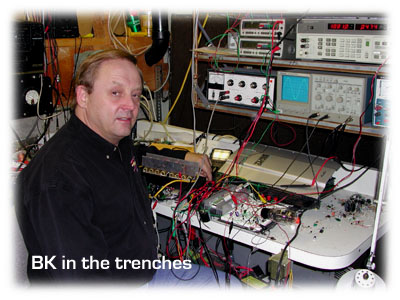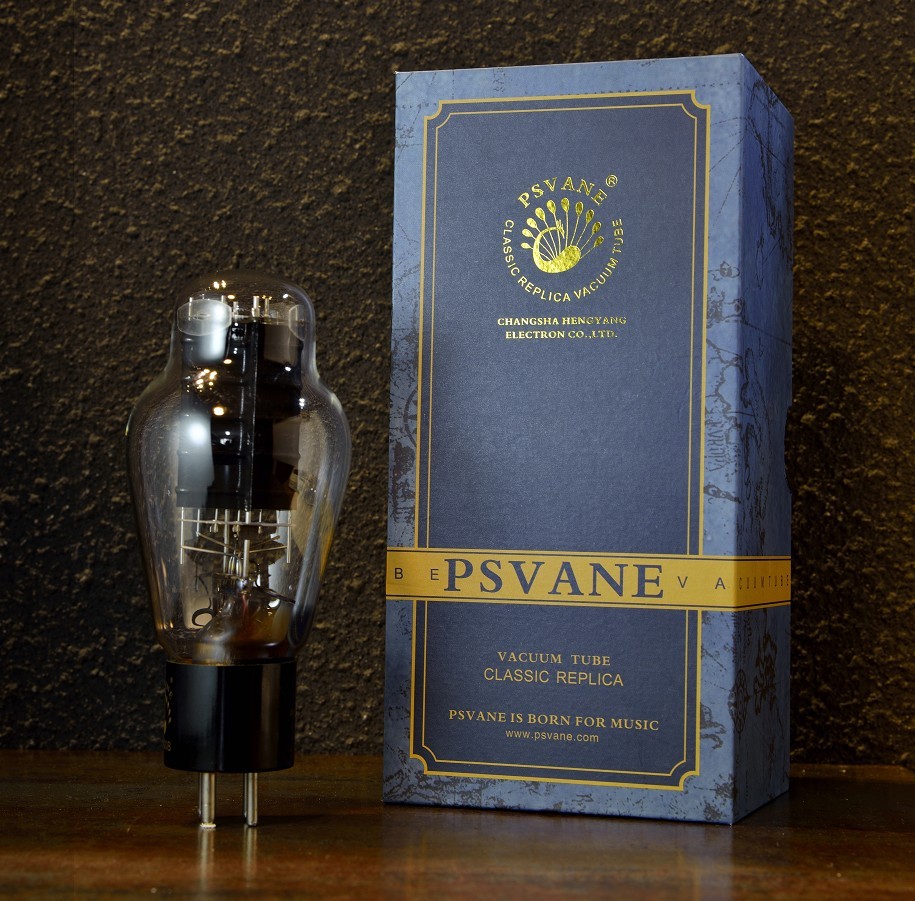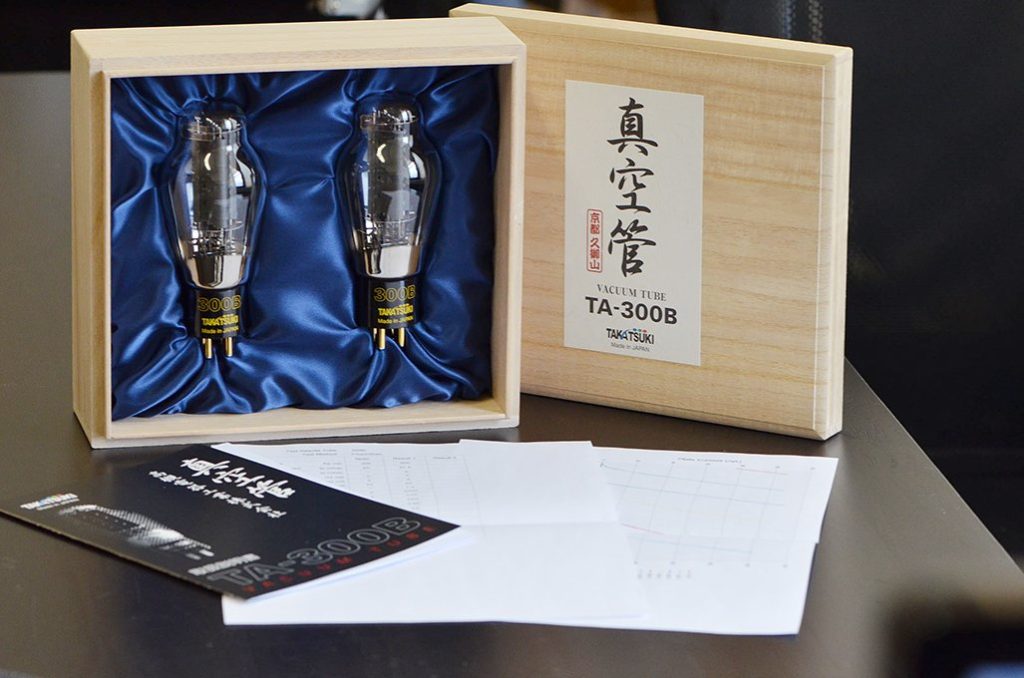
This is the first of a two-part review of the MONAD A100 monoblocks. I’ve owned many amplifiers over the last forty-five years. That’s been enough time for me to come to a few certainties. I much prefer Class A amplifiers, either tube or solid-state amps like the .8 series from Pass Labs and those from PureAudio. Second, I love the sound of a great 300B SET amplifier such as the WAVAC EC 300B or the Shindo 300B amplifiers. Third, like so much of life, the things I love come at a price, you know a Camry will get you around, but it’s not the same as driving a Porsche.
Well, let’s start with the cost of a 300B tube. They produce a whole eight watts and cost me at least $2,000 for the vintages that I like. Yes, like wine, some tube vintages are better than others.
Then there is also the cost of the amps that use these tubes. The ones I love cost thirty grand and you still get only eight watts. If you’re like me and love SET amplifiers with 300B tubes, you know the frustration.
What if I told you that there are monoblocks that are being made that are pure Class A, 100-watt transistor amplifiers, and they each use a single 300B tube. The 300B tube is not used as a driver tube or as an input tube, but it somehow brings the sound of the 300B tube into the circuit so that it results in an amp with the tonality of a 300B SET amp without the weaknesses of a 300B SET or of a transistor amp. Now, it’s not a transistor amp that sounds tube-like or vice versa. These monoblocks just sound like beautiful music, and I was blown away by them at the Capital Audio Show. You can read my initial impressions of these monoblocks here.
A Little History

I was aware of B.K. Butler and his tube designs for professional gear and cars, but until recently I wasn’t aware of his work in high-end audio. Butler has been designing and building vacuum tube related musical products for over 25 years. According to his website, “Celebrity users of his professional products include Billy Gibbons of ZZ Top, David Gilmore of Pink Floyd, Eric Clapton, Elton John, Eric Johnson and hundreds more. BK’s designs and products have satisfied the most critical professional clients over the years.”
With experience and background in what sounds right on stage, Butler knew it should be possible to bring all of the excitement of the live sound and the superior qualities of sound from a recording studio to the consumer audio market. And, it’s no surprise that many recording artists and sound engineers recognize the inherent superiority of vacuum tube equipment for recording live sound.
In 2005, B.K. Butler unveiled an ultimate home audio amplifier, the MONAD A100 Monoblocks. The technology incorporated a single-ended pure Class-A transistor audiophile-level monoblocks design with a 300B tube that somehow influences the sound. It is housed in a beautiful high-quality chassis, and the build quality is exceptional. The current retail price for the MONAD A100 is $19,000/pair.
MONAD A100 Monoblocks Description
I’m not a technology nerd. In fact, I am far from it. Still, this amp needs some technical description. Simply put, it is a 100-watt single-ended zero NFB Class A 300B monoblock. The difference in this design is that the 300B tube is the only tube used by the amp. As I said earlier, the tube is neither a driver or an input tube. Instead, it is used to introduce the sound of the 300B tube into the sound of the amp. It is an understatement to say that this design works.
Robin Wyatt, the exclusive Butler Audio dealer for North America, says the MONAD A100 monoblocks sound like neither a transistor amp or a tube amp. I pretty much agree with that statement, but I can easily hear the good sound that I love so much from a great 300B amp without the downside. For a more technical description, check out the Butler Audio website and Srajan Ebaen’s excellent review on 6moons.
Build Quality of MONAD A100 Monoblocks
The build quality of the Butler Audio MONAD A100 is simply superb. The first thing that you will notice is the beautiful CNC custom chassis designed for looks and for remarkably cool operation. There’s a dimmer control on the back panel for the laser-cut blue-lit Butler logo power indicator on the front panel.
The amp uses the finest parts available such as Vishay-Dale mil-spec 1% resistors, a 700-watt toroidal power transformer, and exceptionally large internal heat sinks. There’s also a lot of silver in and on the circuits. The warm-up for the 300B tube heater filament is 5 seconds. Oh, by the way, regardless of your opinion or lack of one, the MONAD doesn’t use an output transformer.
Choosing Which 300B Tubes
Don’t let anyone tell you that it doesn’t matter which 300B tubes you use in the Butler MONAD amp. Maybe the difference is so easy to hear because there are no other tubes in the circuit. Whatever the reason, I noticed that it was easier to hear the differences of various 300B tubes in the MONAD amp than in any other 300B amp that I have used. I tried three different pairs of 300Bs.

The first pair I tried were the PSVANE Classic Replica 300Bs.

The second pair I tried were the wonderful Takatsuki TA-300Bs.

The third pair were the COSSOR 300B tubes from PSVANE.
The Butler MONAD A100s sounded different with all three pairs of tubes. The sound and soul of the amps came through easily regardless of which set I was using, but the differences were easy to hear and describe.
The PSVANEs sounded great, and I probably would not have asked to hear another pair except that they were a little forward, which did not bother me using my DeVore gibbon SuperNines. On my QUAD ESL57s, however, this forward sound seemed to be right on the pannels.
The Takatsuki TA-300Bs, however, were perfect in my system. My LTA preamp is slightly on the lighter tonal side, where the MONAD A100 with the Takatsuki TA-300Bs is slightly darker tonally. The match was made in heaven.
I hope I’ve given you a little insight into the design of the MONAD A100s. Stay tuned for Part 2 of this review where I’ll delve into the sound by listening to a little music.
Don’t forget to check out part 2 of this review here.

